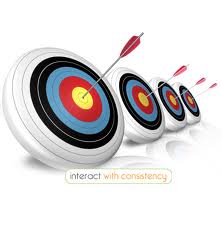An Evolutionary View of Innovation
 My sister has a Ph.D. in biology. For her dissertation, she randomly divided fruit flies into two groups and treated them exactly the same except for one variable. She introduced a specific chemical to one group but not the other. Then she followed the effects through multiple generations. I don’t remember what she discovered but her method allowed her to conclusively link cause to effect.
My sister has a Ph.D. in biology. For her dissertation, she randomly divided fruit flies into two groups and treated them exactly the same except for one variable. She introduced a specific chemical to one group but not the other. Then she followed the effects through multiple generations. I don’t remember what she discovered but her method allowed her to conclusively link cause to effect.
Why did she choose fruit flies? Because she wanted to look at the effects of the chemical over multiple generations and fruit flies create generations quickly. She wanted to know not just how the chemical affected fruit flies. She wanted to know how the chemical affected the evolution of fruit flies.
Could we use evolutionary thinking to solve business problems in innovative ways? Well, there’s a theory that we could develop software more quickly and at less expense through evolutionary techniques.
First we identify a problem that we want software to solve. Then we create, say 10,000 identical sets of code. We introduce random variations into each set, execute the code, and then determine which set comes closest to solving the problem. We take the winner, make 10,000 copies, introduce random variations into each one, then execute the code. We pick the winner and repeat the process. It’s like breeding dogs, only less messy.
With modern computing power, we can generate thousands of generations in very short order. We could almost certainly solve the problem. Additionally, we might generate some very novel solutions. The random variation might lead us down paths that we never would have imagined on our own.
While I suspect we’ll make evolutionary software before long, it does seem a bit exotic. Are there ways we could apply evolutionary thinking to solve more practical, day-to-day problems?
Sometimes I think it’s as simple as asking the question. Too often we make yes/no, either/or decisions – whether-or-not decisions as Chip Heath calls them. But we can always ask the question, is there an evolutionary way of looking at the problem? We might find that there are multiple sub-decisions we could make along the way to the big decision. We can decide smaller issues, test the results, and repeat the process. Each time we do, we create a new generation.
A “generation” in this sense might be a set of market trials, a series of studies, or surveys, or focus groups, or trial balloons. We can find many ways to identify and/or validate market needs. But first we have to ask the question. So the next time you participate in a big decision – especially a big risky decision – be sure to ask yourself, could an evolutionary approach help us here? The answer may be no, but don’t close the door too soon.